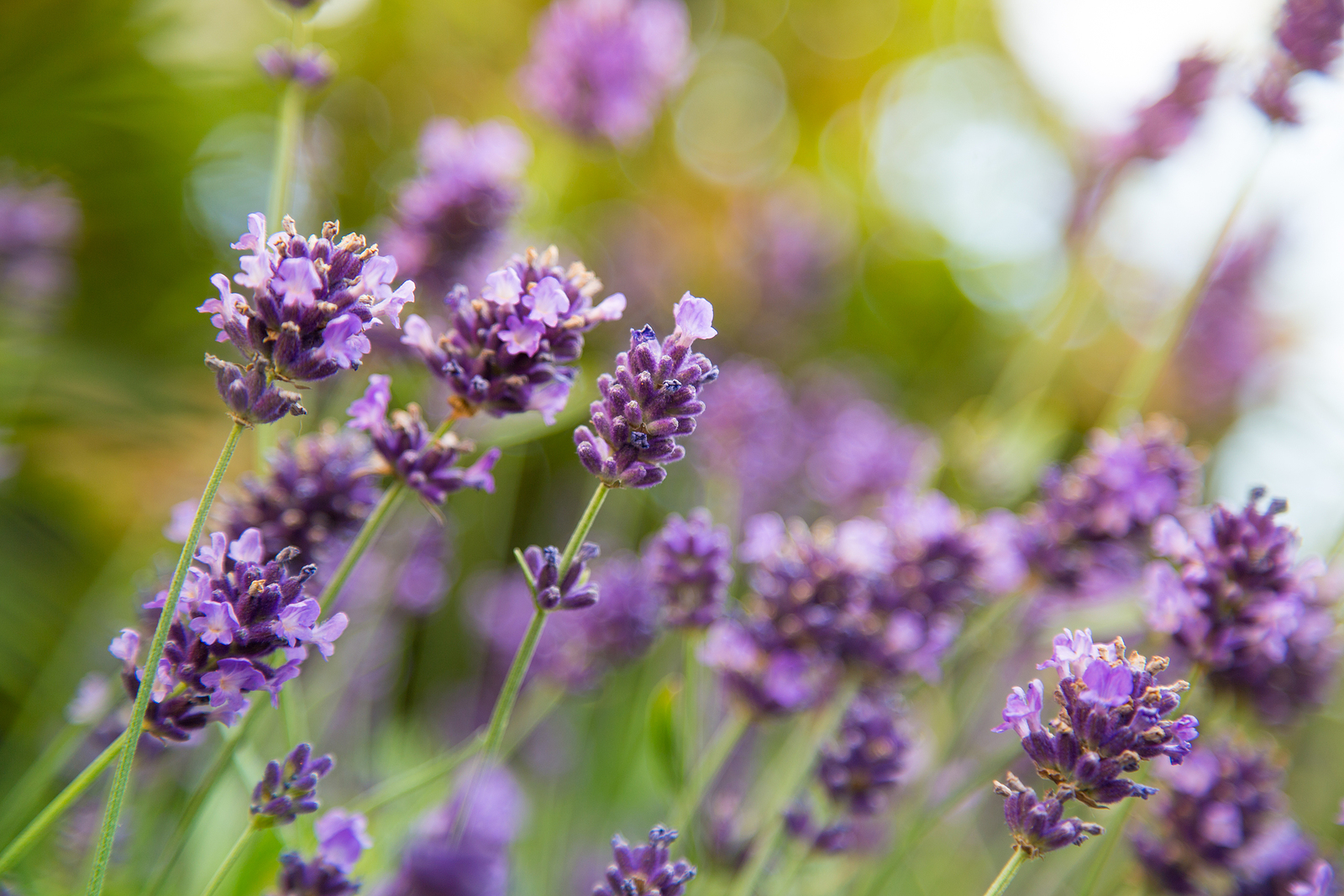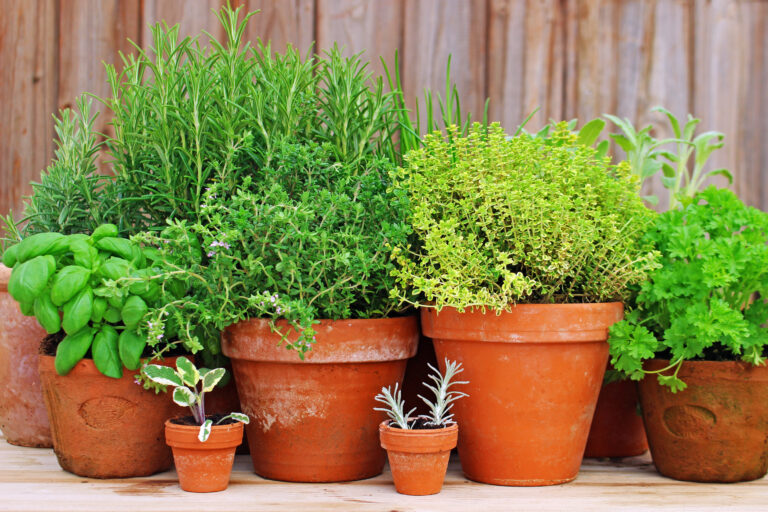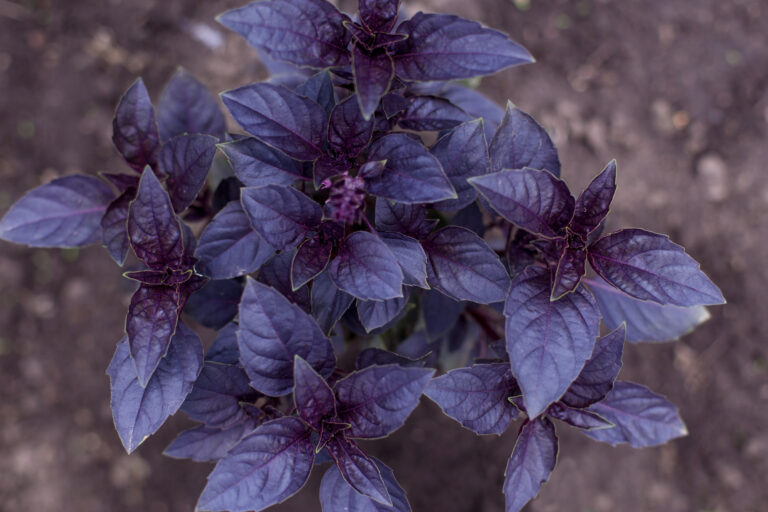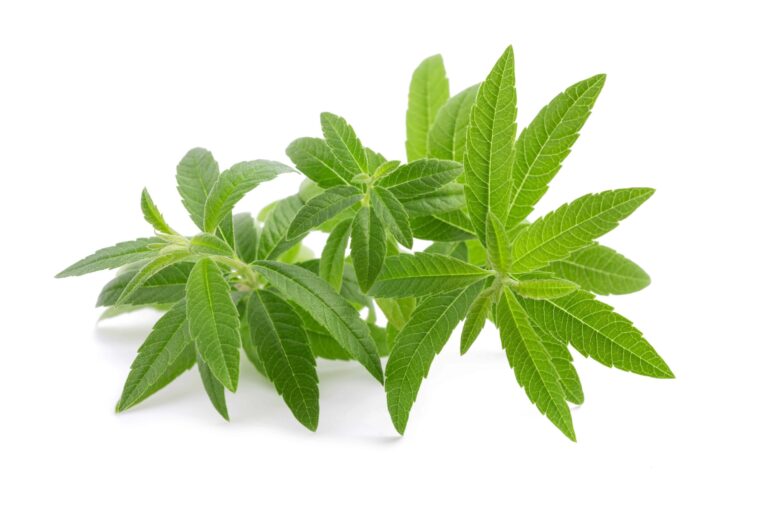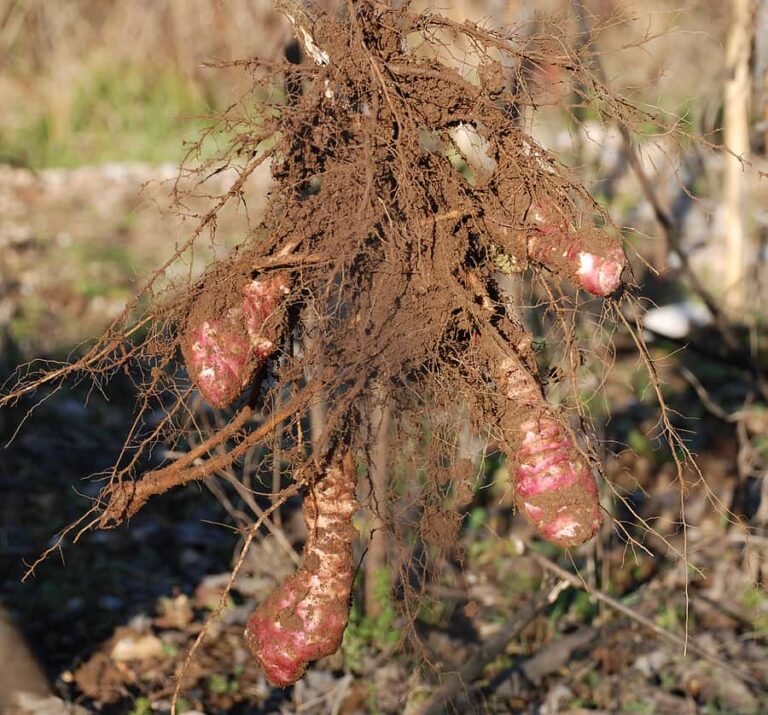How to Plant, Grow, and Harvest Lavender
Lavender is a traditional herb garden plant. Lavender flowers have a strong lemon-perfume flavor. Lavender flowers can be steeped for use in drinks, jellies, and ice cream. Petals can be used in salads, soups, and garnish. The taste of lavender is not for everyone; use it sparingly at first.
Here is your complete guide to growing lavender.
Where to plant lavender
- Best location: Lavender grows best in full sun; it does not mind a hot sunny location.
- Soil preparation: Plant lavender in well-drained soil. Clay soils or soil too rich in organic matter will produce foliage growth rather than blooms. Lavender prefers a soil pH of 6.7 to 7.1. Lavender will grow in dry, light, gravelly soil.
Related articles:
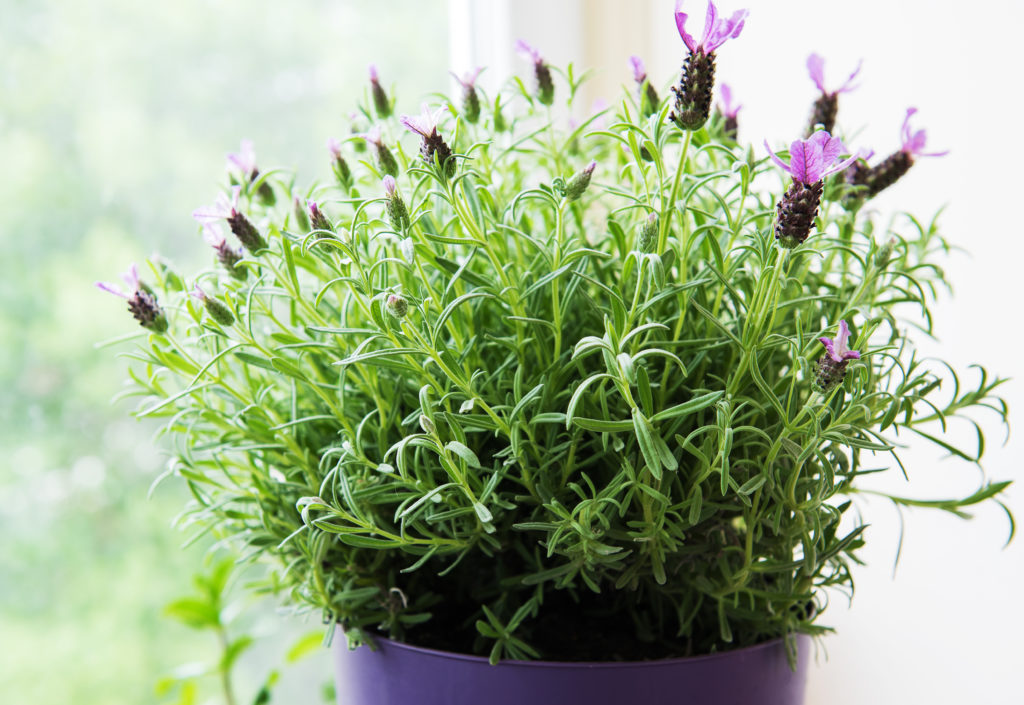
When to plant lavender
- Seed starting indoors: Start lavender indoors 4 weeks before the last frost in spring. Refrigerate the seed for 4 to 6 weeks before sowing. Sow seed in flats in full sun or under fluorescent lights. Seeds will germinate in 14 to 21 days.
- Transplanting to the garden: Transplant lavender outdoors in mid to late spring.
- Outdoor planting time: Sow lavender seed outdoors in late spring after the last frost or in fall. Fall planted seed will germinate the following spring.
How to plant lavender
- Planting depth: Sow seed ½ inch deep.
- Spacing: Space lavender plants 24 to 36 inches apart.
- How much to plant: Grow 2 lavender plants for kitchen and cooking; grow 6 to 12 plants for tea and preserving.
Lavender companion planting
- Companion planting: Plant lavender with echinacea, winter savory, germander, hyssop, yarrow, and boxwood. Lavender flowers attract nectar-seeking insects, including beneficial insects, to the garden.
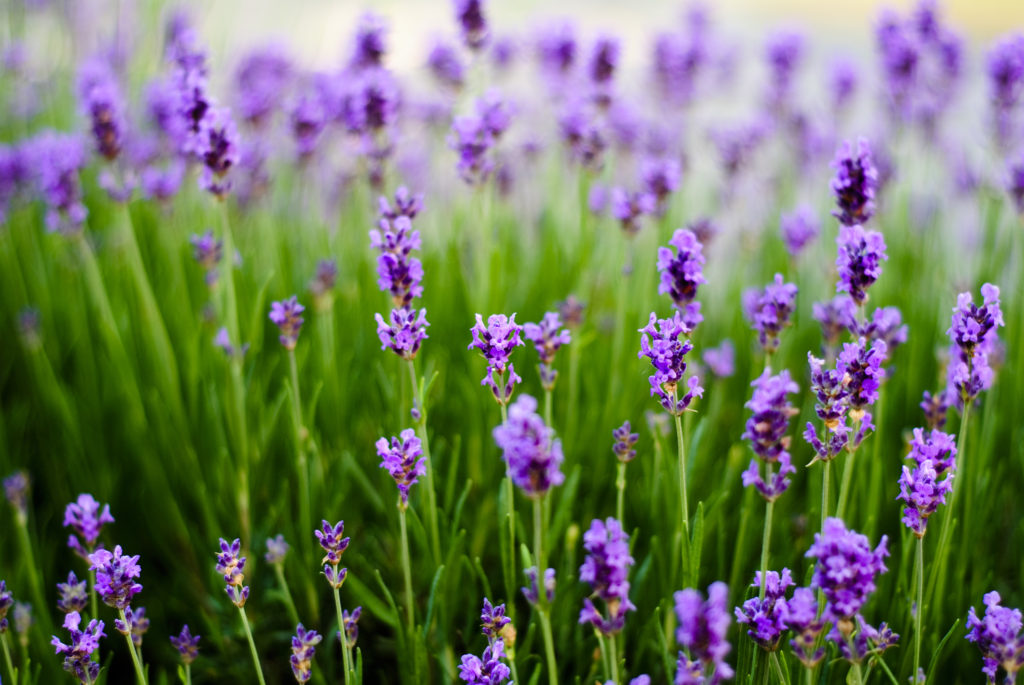
Watering and feeding lavender
- Watering: Water lavender regularly until it becomes established then water when the soil becomes dry to an inch deep. Do not overwater.
- Feeding: Side-dress plants with compost tea every two months. Feed lavender a slow-release organic fertilizer each spring as growth starts.
Lavender care and maintenance
- Care: Removing spent blooms will spur new blooms. Trim back foliage after blooming to shape the plant. Prune plants back by half in spring; remove dead wood and shape the plant. If you prune old wood, it will not regrow. Plants can weaken over 5 years or so and new ones can be started from cuttings in summer. Rejuvenate the soil with aged compost or aged manure before planting new plants.
- Mulching: Place a light mulch of aged compost around lavender in hot summer regions.
Container growing lavender
- Container growing: Choose a container at least 8 inches deep and wide; larger is better if you are growing lavender as a decorative perennial.
- Winter growing: Protect plants in cold winter regions by heaping straw up around plants; remove the straw in spring. Indoors grow lavender in a bright window. Do not overwater lavender growing in pots.
Lavender pests and diseases
- Pests: Healthy lavender plants will be pest-free. Caterpillars sometimes attack weak plants. Spray caterpillars with soapy water or BT if the population is heavy.
- Diseases: Lavender can suffer root rot where the soil is not well-drained.
How to harvest lavender
- When to harvest: Harvest lavender flowers as they begin to open. Harvest flowers for drying before midday; that’s when the oils are most concentrated.
- How to harvest: Snip flowers and stems with a garden pruner. Remove flower stalks after they have faded if you have not taken them sooner.
Lavender in the kitchen
- Flavor and aroma: Lavender smells floral and sweet with balsamic undertones.
- Flowers: Use fresh or dried lavender flowers in cakes, cookies, muffins, jellies, custards, flans, ice cream, black tea, vinegar, fruits, or eggs. Use lavender in the kitchen sparingly at first; it’s an acquired taste.
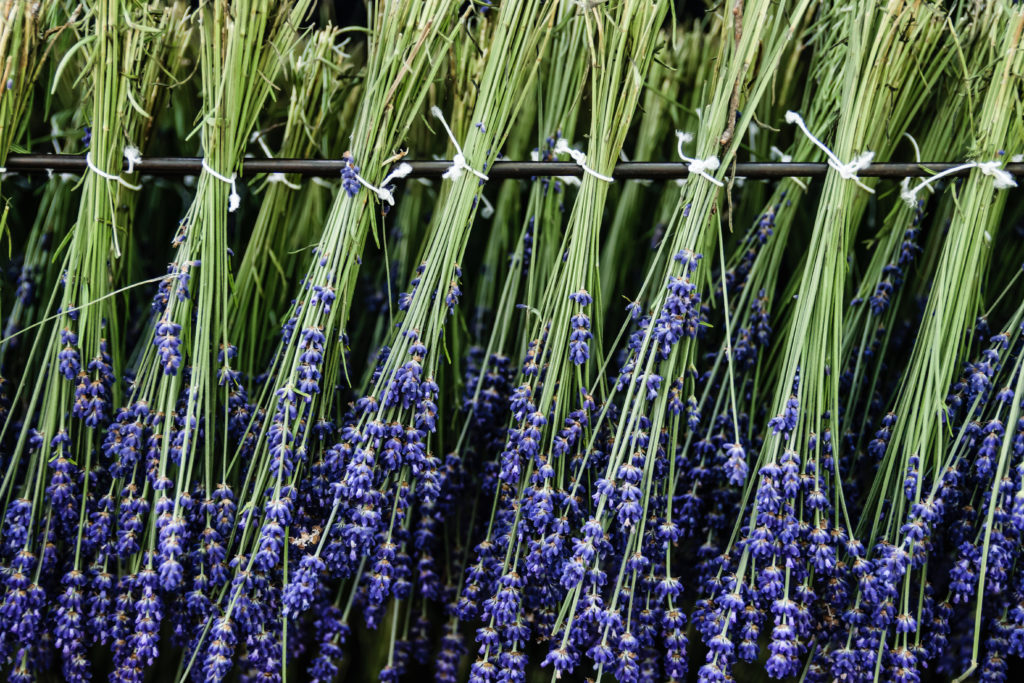
Preserving and storing lavender
- Drying: Dry flowers in a dark, airy place on a screen or by hanging bunches of stems upside down. Dried flowers will remain aromatic for a long time.
Lavender propagation
- Seed: Lavender seeds do not always produce plants identical to the mother plant. Seeds can be sown indoors or outdoors in late spring. Seeds should be stratified for 1 to 2 weeks. Germination can sometimes be slow; cuttings may be a faster way to start new plants. Cuttings are a better way to grow an identical plant.
- Cuttings: Lavender can be propagated by cuttings that are 3 to 4 inches long; strip away the lower leaves then dip the bare stem end in a rooting hormone and place in light potting soil; bottom heat will encourage rooting.
Lavender varieties to grow
There are many varieties and cultivars of Lavandula; here are a few:
- English lavender (L. angustifolia) Grows to 36 inches tall and wide; narrow gray leaves about 2 inches long with smooth margins; pinkish-purple flowers atop slender, leafless stems about 24 inches long. ‘Munstead’ is a dwarf to 18 inches tall with deep lavender-blue flowers. ‘Hidcote’ grow to 1 foot tall has purple flowers. ‘Jean Davis’ has pale pink flowers.
- French lavender ( L. dentate) grows to 3 feet high and has bright green leaves with square toothed edges. Flowers are lavender-purple on short blunt clusters, each topped with a tuft of petal-like bracts; long-blooming.
- Spanish lavender ( L, stoechas) grows 18 to 36 inches tall, has short and narrow gray leaves. Flowers are dark purled growing in short flower spikes topped with a tuft of large purple petal-like bracts; blooms in early summer. A cultivar of Spanish lavender is ‘Otto Quast’ which has showy purple bracts.
- Hybrid lavenders (L. x intermedia) are crosses between English lavenders and Spike lavender ( L. latifolia)—which is a large English lavender. Hybrids include ‘Provence’ which is highly aromatic with pinkish lavender blossoms and ‘Grosso’ which is a compact plant with deep purple flowers.
Also of interest:
- Anise
- Anise Hyssop
- Arugula
- Basil
- Bay
- Bee Balm
- Borage
- Calendula
- Caraway
- Catnip
- Chamomile
- Chervil
- Chives
- Cilantro-Coriander
- Clary
- Costmary
- Cress
- Dill
- Fennel, Sweet
- Horseradish
- Hyssop
- Lavender
- Lemon Balm
- Lemon Verbena
- Lovage
- Marjoram
- Mint
- Nasturtium
- Oregano
- Parsley
- Perilla
- Rosemary
- Sage
- Salad Burnet
- Savory
- Scented Geranium
- Shiso
- Sorrel
- Stevia
- Sweet Cicely
- Tarragon
- Thyme
Related articles:
Best Herbs for Container Growing
Planning the Home Fruit Garden
Garden Planning Books at Amazon:
- Vegetable Garden Almanac & Planner
- Kitchen Garden Grower’s Guide Vegetable Encyclopedia
- Vegetable Garden Grower’s Guide
- Tomato Grower’s Answer Book

